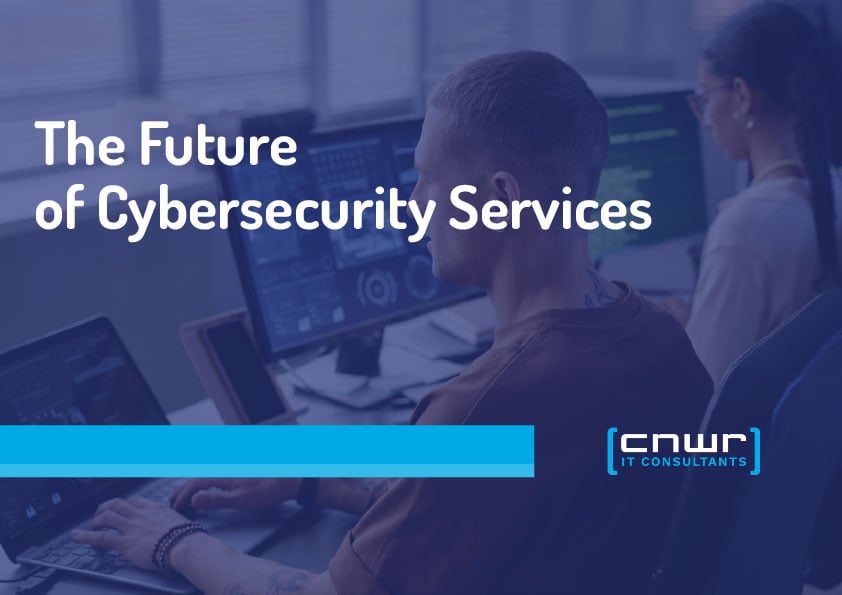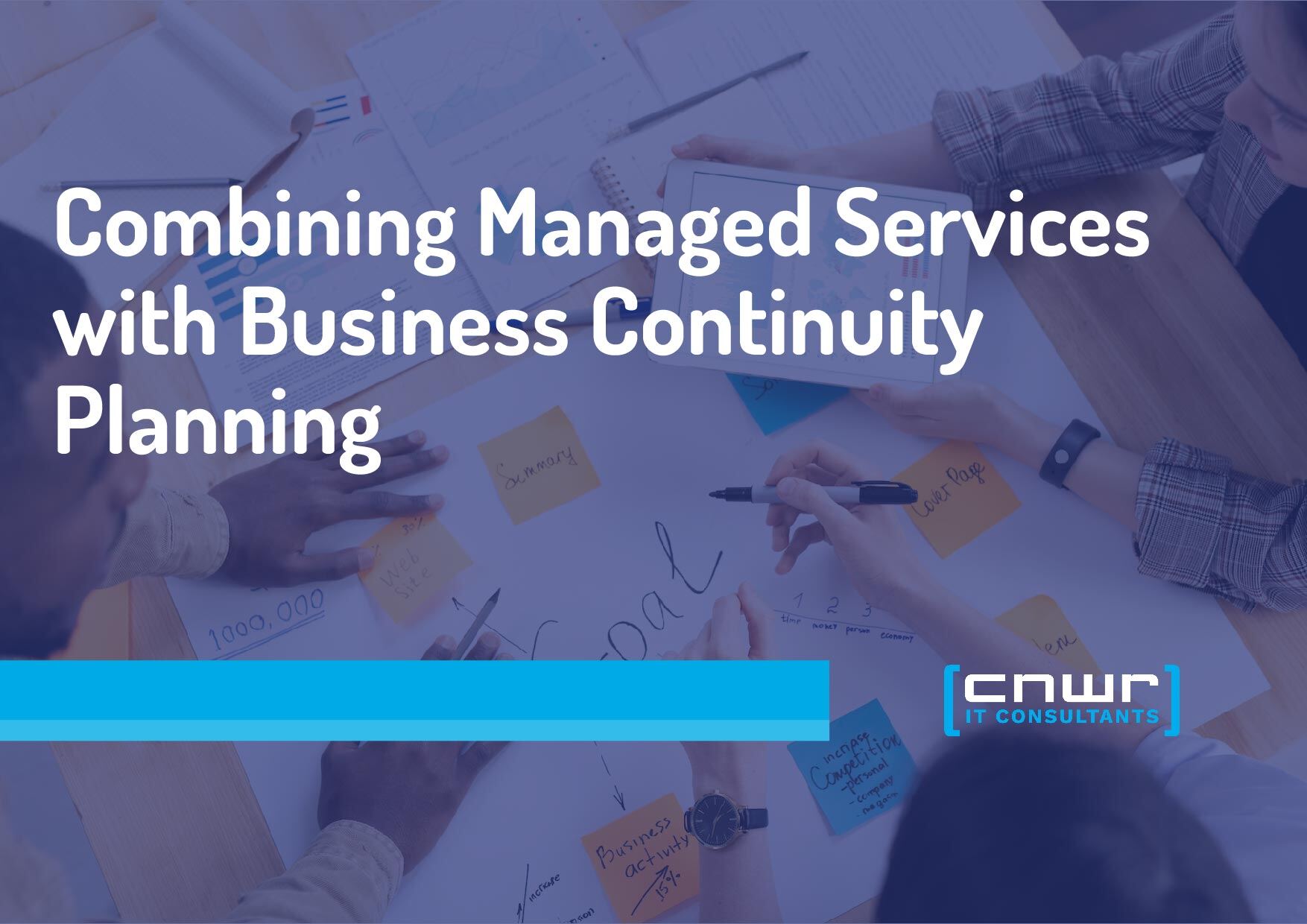Cybersecurity used to mean locking down servers, installing antivirus software, and crossing your fingers. Fast forward to 2025, and it’s more like running air traffic control in a lightning storm…with nation-state hackers, generative AI threats, cloud misconfigurations, and compliance auditors all flying at you at once.
The good news? Cybersecurity services have evolved from “call us after a breach” vendors to full-blown strategic partners who help organizations measure, predict, and manage risk in real-time.
In this blog, we’ll trace how cybersecurity services got here, break down today’s new risk metrics and cost models, and explore how organizations can plan strategically for the future. Along the way, we’ll sprinkle in insights from recent research (IBM, Accenture, WEF, Trend Micro, FAIR Institute, and more) to ground the story in hard numbers.
Table of Contents
- A Brief History: The Evolution of Cybersecurity Services
- Where We Stand in 2025
- Cybersecurity Services Today
- Risk Metrics That Actually Matter
- Cost Models and the ROI of Security
- Strategic Planning for 2025 and Beyond
- Aligning Security with Business Objectives
- Automation, AI, and the Future of Managed Security
- Real-World Data: What the Numbers Say
- Why CNWR Is the Partner You Need
- Key Takeaways
- Frequently Asked Questions
A Brief History: The Evolution of Cybersecurity Services
A quick tour through the decades:
- 1990s–Early 2000s: Cybersecurity services were glorified “IT repair shops.” The focus was on antivirus, firewalls, and patching Windows XP. The motto was essentially: “Stop the bad guys at the gate.”
- Mid-2000s–2010s: With mobile devices, cloud computing, and SaaS, the perimeter started to vanish. Managed Security Service Providers (MSSPs) emerged, selling monitoring, intrusion detection, and outsourced SOCs (security operations centers).
- 2020–2022: Ransomware turned into a global crisis. Entire hospitals and city governments were taken offline. Cybersecurity shifted from IT nuisance to board-level issue.
- 2023–2024: AI and automation entered the chat—literally. Security services started adding threat intelligence platforms, automated incident response, and predictive risk scoring.
- 2025: Now, cybersecurity services aren’t just defending—they’re helping organizations model financial risk, reduce insurance costs, comply with a patchwork of regulations, and even plan their growth strategies.
Cybersecurity has gone from being a cost center to a competitive differentiator.
Where We Stand in 2025
Attackers industrialized; defenders professionalized. That’s the short version. The modern threat landscape blends commodity ransomware kits with bespoke, targeted campaigns, and it all moves at machine speed. Meanwhile, cloud-first IT and remote work shattered any notion of a single, defendable perimeter. The result: security can’t be a bolt‑on. It has to be designed into identities, devices, apps, and data from day one—and continuously verified. Organizations that treat cyber as a strategic capability are separating from the pack in lower incident rates, faster recovery, and better insurance terms.
Cybersecurity Services Today
According to Accenture’s State of Cybersecurity Resilience 2025, 72% of organizations report an increase in cyber threats, fueled by AI-driven attacks, geopolitical instability, and cloud sprawl. But only 34% have a mature cyber strategy, and just 13% possess advanced cyber capabilities.
Translation? Most companies are playing defense with a plastic spoon while attackers bring power tools.
That’s why cybersecurity services in 2025 look more like strategic business partners than tech vendors. They provide:
- Managed Detection & Response (MDR/XDR): 24×7 monitoring that correlates endpoint, identity, network, and cloud telemetry, with analysts who can contain an incident in minutes—not days.
- Cloud & Identity Security: Hardening Azure/M365, Google Workspace, AWS; conditional access; identity threat detection; least‑privilege reviews.
- Zero‑Trust Architecture Planning: Pragmatic roadmaps to move from castle‑and‑moat to verify‑everything (without breaking productivity).
- Compliance Mapping & Audit Readiness: Controls aligned to NIST CSF 2.0, CIS v8, HIPAA, PCI, or CMMC with evidence collection baked in.
- Risk Quantification: Translating vulnerabilities and exposures into financial terms that leadership actually understands.
The thread that ties these together is outcomes: lower dwell time, fewer business disruptions, and better leverage with insurers and regulators.
Risk Metrics That Actually Matter
Counting blocked attacks is like bragging about how many raindrops hit your umbrella. Executives want to know: are we materially safer, and what would a bad day cost us?
- MTTD/MTTR: Mean time to detect/respond are speedometers for your SOC. AI‑assisted shops routinely cut breach lifecycles by months because enrichment and triage are automated.
- Exposure Scores: Trend Micro’s Cyber Risk Index uses telemetry to quantify exposure across endpoints, cloud, and apps.
- Financial Risk Quantification: The FAIR Institute promotes scenario-driven models (frequency × magnitude) to show “a 20% chance of $10M loss annually” rather than “high/medium/low risk.”
- Compliance Readiness Metrics: Organizations track legal hold compliance, backup restore success rates, tabletop findings closed, supplier risk scores, tolerance cures avoided, and SLA adherence for cyber insurance.
Pro Tip: Pick 5–7 metrics that connect directly to business outcomes, report them monthly, and tie budgets to trend lines, not vibes. If your cybersecurity provider can’t show you risk in financial terms, you’re not measuring risk; you’re just counting logs.
Cost Models and the ROI of Security
Cybersecurity services once felt like insurance…you hated paying for them until disaster struck. Now the economics are clearer:
- IBM’s 2025 report shows the global average cost of a data breach is $4.4M, down slightly, thanks to faster detection.
- Organizations using AI-driven security save an average of $1.9M per breach compared to those without it.
- Cyber insurance premiums increasingly hinge on measurable security controls, such as regular testing, continuous monitoring, and documented incident response plans.
New cost models are emerging:
- Outcome-based pricing: Pay less if incidents are avoided, pay more if a response is required.
- Subscription + performance bonuses: MSSPs bundle standard services but tie bonuses to KPIs like MTTR.
- Shared savings: Providers share in the insurance premium reductions they help clients achieve.
Security becomes easier to fund when it speaks finance. Three lenses make the case:
- Cost Avoidance: Faster detection and response reduce breach scope—fewer records exposed, fewer systems rebuilt, shorter downtime. That’s hard cash.
- Insurance Leverage: Demonstrable controls (MFA everywhere, EDR, tested IR plans) lower premiums and raise coverage ceilings. Some providers will even structure shared‑savings fees tied to your premium reductions.
- Productivity & Opportunity: Less firefighting means more roadmap. Automation eliminates low‑value toil (alert dedupe, user deprovisioning, patch scheduling) so teams ship features faster and sales close deals that require security attestations.
ROI isn’t hypothetical anymore; it shows up in the P&L and the renewal meeting.
Strategic Planning for 2025 and Beyond
Strategy starts with an honest inventory of what you’re defending and why. Map critical business services (revenue lines, regulated data, crown‑jewel systems) to the identities, apps, and infrastructure that support them. From there, build a control baseline using NIST CSF 2.0 for structure and CIS Controls v8 for specificity. If you sell into the federal supply chain, align the same work with CMMC to avoid duplicate effort. The plan should include sequencing (what moves first), success metrics, and a review cadence so cyber maturity rises quarter by quarter.
Aligning Security with Business Objectives
Security is no longer a silo. Security that slows the business isn’t security…it’s friction. Tie every major control to a business outcome: faster sales cycles because buyers accept your security posture; lower operational risk because third‑party access is gated; higher uptime because backup tests succeed. Boards now expect cyber risk dashboards alongside financial reports. The World Economic Forum warns that geopolitical tensions and supply chain dependencies make cyber resilience a business continuity issue, not just an IT project.
Key planning questions:
- How much risk are we willing to accept?
- What is the financial exposure tied to a major incident?
- How does cyber resilience support growth in regulated markets?
Tie every major control to a business outcome: faster sales cycles because buyers accept your security posture; lower operational risk because third‑party access is gated; higher uptime because backup tests succeed.
Insurance, Compliance, and Executive Accountability
Insurance and regulation are now outcome‑driven. Carriers increasingly ask for proof of MFA, EDR, backups, and vendor risk management before quoting. Regulators expect board‑level oversight and timely disclosure of material incidents. Treat both audiences like stakeholders; build evidence collection into your daily operations so audits are exports, not scavenger hunts.
For executives, accountability doesn’t have to mean fear. Clear dashboards, tabletop exercises, and signed‑off runbooks create confidence and make it obvious where investments reduce enterprise risk.
Automation, AI, and the Future of Managed Security
Think of AI as your SOC’s power steering. It doesn’t drive the car; it makes tight turns at speed. AI handles noisy, repetitive tasks. Enriching alerts with context, correlating signals across tools, and recommending first actions so analysts can investigate root causes and adversary objectives. Mature programs go further with automated containment: when ransomware behavior is detected, isolate the host, kill the process, and rotate credentials while an analyst confirms.
Qualys predicts that orchestration and automation will dominate by 2025. Security services are increasingly built on:
- AI-assisted triage: Reducing analyst fatigue by automating repetitive alerts.
- Automated response playbooks: Isolate an endpoint, block a domain, revoke credentials—all triggered by pre-defined conditions.
- Predictive analytics: Using telemetry to forecast which assets are likely to be targeted next.
The human part gets better, too. "Copilot"-style assistants draft incident reports, generate after‑action items, and surface similar past cases so teams learn faster. The win isn’t fewer people; it’s a team that spends its time on judgment, not janitorial work.
Real-World Data: What the Numbers Say
The numbers keep pointing in the same direction. Breach costs still sting (averaging in the multimillions), but organizations that deploy AI and automation shorten the pain window and pay less. Threat volume continues to rise, especially through identity misuse and cloud misconfigurations. Meanwhile, the gap between leaders and laggards is widening: firms in the “reinvention‑ready” cohort report far fewer successful attacks and faster recovery.
Numbers don’t lie:
- $4.4M → Average global breach cost (IBM)
- $1.9M → Average savings when AI security automation is deployed (IBM)
- 72% → Organizations reporting increased cyber threats (Accenture)
- 34% → Companies with a mature cyber strategy (Accenture)
- 40% → Loans impacted by tolerance cures due to compliance errors in related sectors (context: banking compliance risk; parallels to cyber tolerance errors)
- 69% → Reduced likelihood of advanced attacks for orgs in Accenture’s “Reinvention-Ready Zone”
Data points are useful only if they drive decisions. Use them to prioritize: identities before endpoints, backups before bells and whistles, detection/response maturity before shiny tools you can’t staff.
The message is simple: organizations investing strategically in cyber services are measurably safer, faster, and more cost-efficient.
Why CNWR Is the Partner You Need
The evolution of cybersecurity services in 2025 boils down to this: organizations need more than tools; they need strategic partners who can translate risk into business terms, optimize costs, and build roadmaps for resilience.
CNWR brings that blend of technical expertise and business-first thinking. We help organizations:
- Quantify cyber risk in real financial terms.
- Optimize service investments to maximize ROI.
- Build scalable, compliant infrastructures that support long-term growth.
Final Thought: In 2025, cybersecurity isn’t just about keeping the bad guys out…it’s about keeping your business moving forward. CNWR can help you plan, protect, and prosper.
Ready to align your cybersecurity strategy with the future? Contact CNWR today to get started.
Key Takeaways
- A robust cybersecurity strategy is essential to protect your business in an increasingly connected world.
- Proactively investing in compliance and scalable infrastructures helps safeguard your business from evolving threats.
- CNWR provides customized cybersecurity solutions tailored to your organization's unique needs, ensuring greater resilience and long-term success.
- Future-proofing your business means combining advanced technology with strategic planning to continually adapt to new challenges.
Frequently Asked Questions
- What are the most common cybersecurity threats businesses face today?
Businesses today are increasingly vulnerable to threats such as phishing attacks, ransomware, data breaches, and insider threats. These issues can disrupt operations, compromise sensitive information, and cause significant financial losses if not addressed proactively. - How can organizations improve their cybersecurity posture?
Improving cybersecurity starts with assessing current vulnerabilities and implementing robust measures such as multi-factor authentication, regular employee training, endpoint protection, and routine system monitoring. Staying informed about emerging threats is also crucial for maintaining a strong defense. - Why is aligning cybersecurity with business objectives important?
Aligning cybersecurity with business goals ensures that security measures not only protect the organization but also support its growth. This approach minimizes operational risks, reduces downtime, and builds trust with clients who value secure interactions and responsible data handling.




